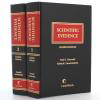![file5721298196911[1]](https://ramseylawlibrary.org/wp-content/uploads/2013/03/file572129819691111-300x200.jpg) Troubles continue with the St. Paul Crime Lab, as the police union criticizes the Police Department’s plan to hire a civilian forensic manager for the facility, namely one with a greater scientific background. According the Pioneer Press, The St. Paul Police Federation attorney stated in a letter that “that the use of non-union personnel to do work previously and historically performed by members of its bargaining unit… [is]…subject to mandatory bargaining.” Police Chief Thomas Smith justified the hiring action on grounds that the City of St. Paul simply created the new job classification based on independent consultant recommendations, thus violating no existing contract. More can be read about this here.
Troubles continue with the St. Paul Crime Lab, as the police union criticizes the Police Department’s plan to hire a civilian forensic manager for the facility, namely one with a greater scientific background. According the Pioneer Press, The St. Paul Police Federation attorney stated in a letter that “that the use of non-union personnel to do work previously and historically performed by members of its bargaining unit… [is]…subject to mandatory bargaining.” Police Chief Thomas Smith justified the hiring action on grounds that the City of St. Paul simply created the new job classification based on independent consultant recommendations, thus violating no existing contract. More can be read about this here.
Not all forensic scientific evidence for legal purposes gets processed through a traditional crime lab, per se, because such evidence goes much further than just fingerprints or blood spatters. It also includes such evidence as bite marks, voice recognition, polygraph readings, and so much more. How these various scientific tools fit into the framework of laws and the constitution is not always simple or clear, however. In 2009, The National Academy of Sciences released their report, Strengthening Forensic Science in the United States: A Path Forward. The report criticized the forensic science profession for failing to establish valid procedures and accurate results as was needed by the courts system. Professors Paul C. Giannelli and Edward J. Imwinkelried (et al.) responded with the 2012 release of Scientific Evidence (5th Ed.), published by LexisNexis. The Professors expressed their hope “that this edition will help the bar and bench conduct that scrutiny.”
The St. Paul Crime Lab fiasco is but one reason why the modern legal professional must be aware of the latest scientific techniques as they serve to demonstrate or disprove connections between evidence and individuals. Indeed, this two-volume set of over 30 clearly-written chapters analyzes numerous cutting-edge scientific techniques. It also provides extensive citations to the latest case law and statutory authority for spot-on legal research and analysis of these corners of forensic science.
Stop into the Law Library if you would like to look at this impressive set.